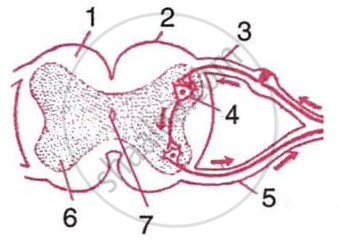Advertisements
Advertisements
Question
List in tabular form two differences between reflex action and walking.
Solution
Reflex action Walking
1. Involuntary action Voluntary action
2. Occurs in response to stimuli Requiring thinking and control
APPEARS IN
RELATED QUESTIONS
Give examples of unconditional reflexes
Which of the following helps in maintaining posture and balance of the human body?
Which of the following statements is correct about receptors?
The part of brain which takes part in regulating respiration in the human body is :
(a) medulla
(b) pons
(c) cerebellum
(d) cerebrum
When we touch a hot plate unknowingly, then this heat is sensed by a receptor P present in our fingers. The receptor triggers and impulse in neuron Q which transmits the message to an organ R which is a part of the central nervous system. Here the impulse is passed on to a neuron S which in turn passes it to a yet another neuron T. The neuron T passes the impulse to a tissue U in our arm. The tissue U then contracts and pulls our hand away from the hot plate.
(a) What is the name of (i) receptor P (ii) neuron Q, and (iii) organ R?
(b) What is (i) neuron S, and (ii) neuron T?
(c) Name the tissue U.
(d) What name is given to the phenomenon in which hand is pulled away quickly from the hot plate?
(e) Name the effector in this whole process.
Differentiate between the following pair of terms:
Stimulus and impulse
State whether the following is simple reflex, conditioned reflex or neither of the two.
Knitting without looking
State whether the following is
Blinking
Reflex arc allows the rapid response of the body to a stimulus.
Given alongside is a partial diagrammatic representation of a certain phenomenon pertaining to the nervous system.
 |
- Name the parts numbered 1-7.
- Name the phenomenon that the diagram depicts and define it.
- Give the technical term for the point of contact between two nerve cells.
- Name the parts not shown in the diagram that should be included to complete the pathway of the phenomenon.
